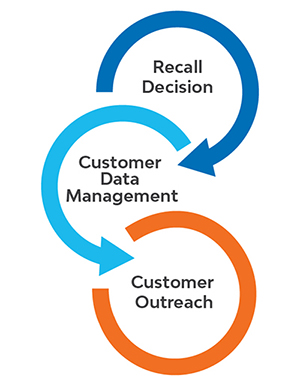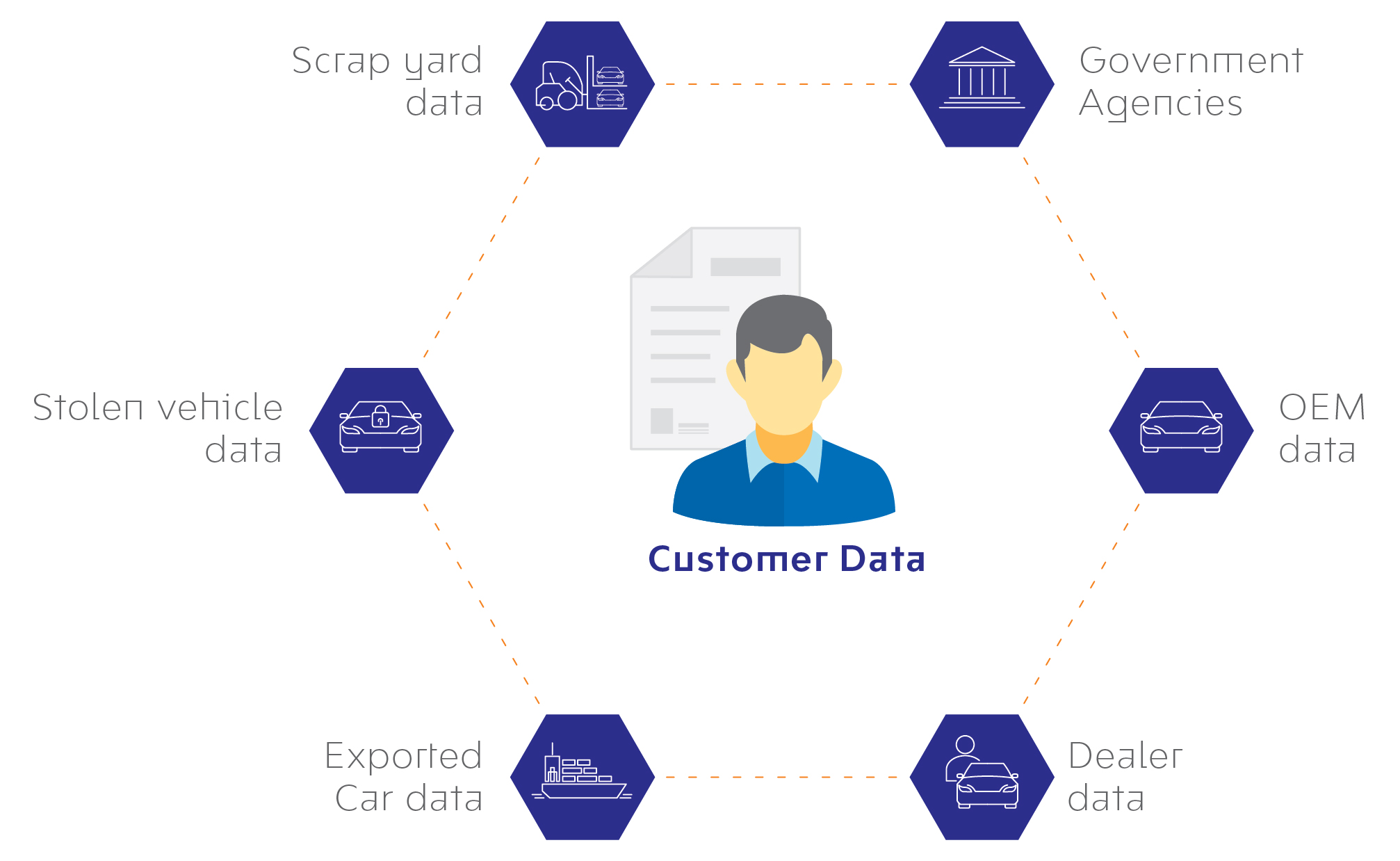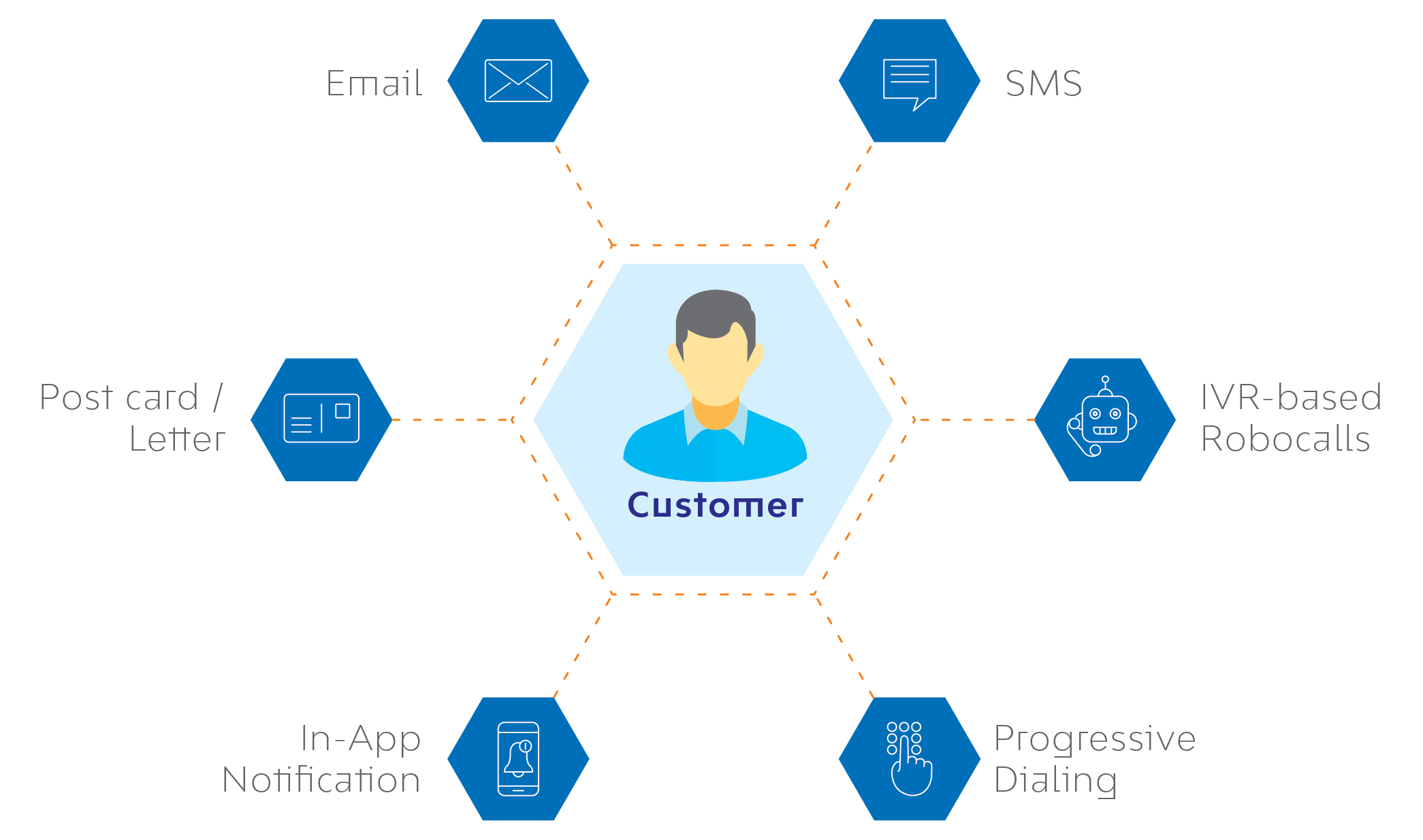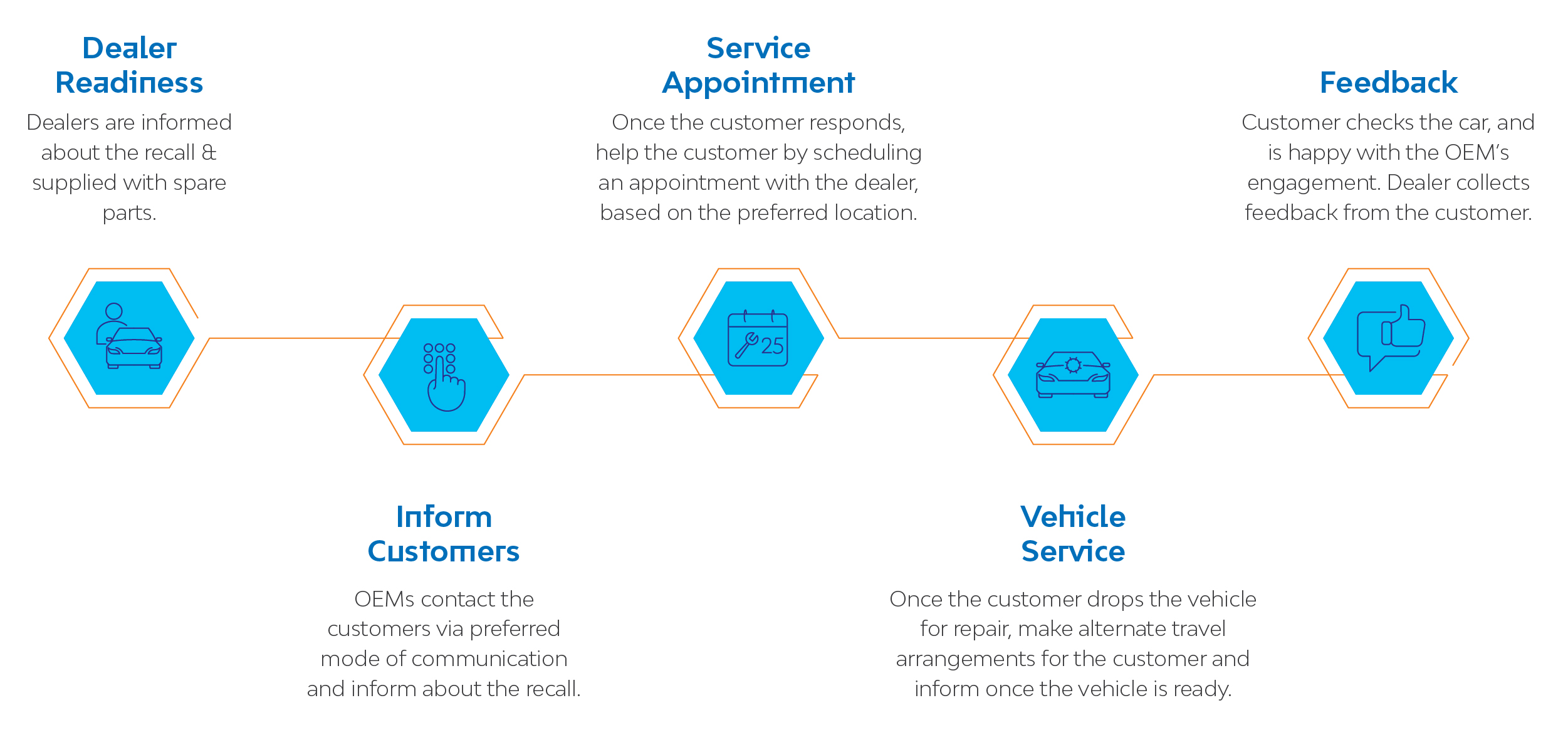Vehicle Recall Management – Show Customers You Care
Overview
According to recent statistics, in 2015, around 947 million passenger cars and 335 million commercial vehicles were in operation worldwide. In 2016, some 72 million cars were produced worldwide. With so many vehicles in our roads, customers trust the OEMs (Original Equipment Manufacturer) with their safety while travelling. However, global auto manufacturers have been dealing with a deluge of negative customer sentiments recently– notably with the Volkswagen Emission issue and the Takata airbag inflator malfunction.
Vehicle recall is often viewed with a negative connotation by consumers, and OEMs view it as a public relations challenge. However, it need not be so. If handled correctly, this could be an excellent opportunity for OEMs to prove that they care about consumer safety and are always looking at different ways to improve the safety of their vehicles.
Vehicle recall is very critical as it involves safety of the passengers, and even a slight negligence from the OEMs could attract hefty fines from the public agencies like the National Highway Traffic Safety Administration (NHTSA) in the US or European Transport Safety Council (ETSC). Hence, this demands customer data of the highest quality. As the vehicle recall is a sensitive social issue, OEMs need to be transparent and should have a well-defined process to ensure absolute traceability.
As a process, Recall Management needs to ensure end-to-end visibility of the process:-

Recall Decision
OEMs need to continuously gather data from various sources like social media, dealers & telematics units to sense any trends or occurrences of safety issues. As safety incidents affect multiple OEMs, there is a need & obligation to share data throughout the industry. Once an OEM assesses the scale & impact, a decision needs to be made, and public notification of the same has to be done.

Customer Data Management
Once a recall decision is made, identifying the affected customers is very critical in order to rectify the issue. One of the major hurdles OEMs face, is to get the impacted customer data. Since the Automobile aftermarket is huge, it adds to the problem of getting updated & cleansed ownership information. Most of the OEMs have access to multiple data sources like government agencies, stolen vehicle data, salvage yard data, etc. OEMs need to consolidate the customer data from multiple data sources in order to create a master data list of customer information. Since the complete coverage is absolutely mandatory, OEMs often need to go through multiple rounds of customer outreach.

Customer Outreach
With accurate owner information available with OEMs, right owners can be contacted and notified about the recall, repairs can be tracked, and compliance and regulatory reporting can be done. OEMs use multi-channel communication like SMS, emails, Robocalls, Predictive Dial-ling & sending app notifications, etc to reach out to customers.

Common Challenges with Vehicle Recall
With recent issues like Volkswagen Emission issue and the Takata airbag inflator malfunction, OEMs are facing an uphill task to reach out to millions of impacted customers. Some of the common challenges OEMs face during vehicle recall are:
- Customer information: With customer information available from different data sources, consolidating and identifying the right information of the owner is a major challenge.
- Scheduling an appointment: OEMs have to co-ordinate with dealers and impacted customers to schedule an appointment for servicing.
- Availability of spares: OEMs should have a strong SCM process for providing the spare parts to the dealers to fix the affected vehicles.
- Reporting: With government agencies enforcing strict rules and hefty fines against OEMs for any negligence, consolidating the outreach data and reporting is highly important.
Customer Journey
A vehicle recall can be an inconvenience to the customer and OEMs need to handle it with care to make the customer feel informed and secured about the status & completeness of the repair. Below is a customer journey through the recall process.

Conclusion
It’s no surprise that whenever there are numerous injuries or deaths and a vehicle recall has to be initiated, the brand’s reputation is tarnished putting brands at risk. Although the recall incidents are rising in the past few years, OEMs can minimize the impact on the brand by being transparent with its customers and government agencies. OEMs should make their customer’s safety a top priority. By creating an effective recall plan and informing all its stakeholders at every step of the recall, OEMs can make a positive impact on its customers.
More from Navin PN
Connected Vehicles In today's world, vehicles are basically ECUs (Electronic Control Unit)…
Latest Blogs
As CISOs or cybersecurity decision-makers, how often do you come across questions such as "Am…
Last week, I had the privilege of attending Informatica World 2025 in Las Vegas, a landmark…
Introduction Vehicle Insurance has long been known for its complexity. Why? Because it relies…
Core banking platforms like Temenos Transact, FIS® Systematics, Fiserv DNA, Thought Machine,…




